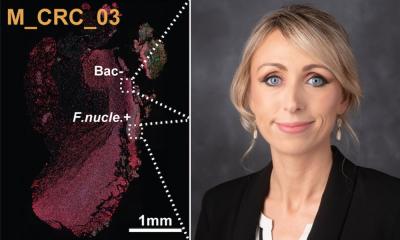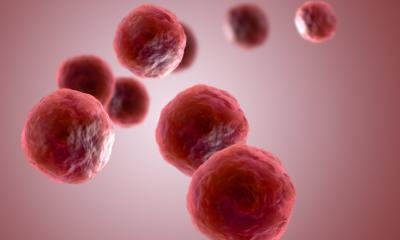
Image source: Wang X et al., Science Advances 2024 (CC BY 4.0)
News • Cancer development research
Exploring the role of sex in tumor growth
A study by Tulane University researchers has uncovered new insights into how biological sex differences can influence tumor growth.
The findings, published in Science Advances, could lead to a better understanding of cancer development and potentially boost efforts to identify a method to stop tumors in their tracks. The study found that tumors in female fruit flies grew 2.5 times larger than tumors in male fruit flies over the same time period.
Fruit flies are an often used biological research model due to their genetic similarity to humans. In this study, researchers found that the female fruit flies had a stronger innate immune response to the tumors than the males. This response accelerated the growth of tumors by triggering a signaling pathway between cells. “It was a surprise to see females having such a difference in tumor size. The question now is, do we see this same difference in humans?” said corresponding author Wu-Min Deng, PhD, professor of biochemistry and molecular biology at Tulane University School of Medicine and the Gerald & Flora Jo Mansfield Piltz Endowed Professor in Cancer Research at Tulane Cancer Center. “Genetically, many of these signaling pathways are well preserved between mammals and insects so this finding is highly relevant to our knowledge of cancer development.”
We found that in female fruit flies, their stronger immune response caused a downstream cascade of events, culminating in the release of insulin-like peptides which allowed the tumors to accelerate their growth
Wu-Min Deng
The study found that once a tumor formed, female fruit flies’ immune cells (hemocytes) produced more of an inflammatory response signal than their male counterparts. This signal protein, called Eiger, is comparable to a similar protein in mammals, which also regulates immune system and inflammatory responses.
While inflammation is often effective at combatting outside invaders, too much inflammation can create an environment that allows tumors to thrive. “We found that in female fruit flies, their stronger immune response caused a downstream cascade of events, culminating in the release of insulin-like peptides which allowed the tumors to accelerate their growth,” Deng said.
Questions about how cancers develop remain abundant, and researchers are only beginning to scratch the surface of how sex differences impact different cancers. ''Cancer is a systemic disease that affects the entire body,'' said first author Xianfeng Wang, PhD, instructor of biochemistry and molecular biology, Tulane School of Medicine. “Our work has uncovered a mechanism involving the local tumor microenvironment and multiple organs that regulate the sex-specific differences in tumor growth at the systemic level.”
Deng said the next step is to determine if the bias in tumor growth is regulated by hormones or sex chromosomes, work that may shed further light on why and how tumors grow. “Hopefully by understanding this difference we can learn how to control this tumor growth and how tumors work to kill their hosts,” Deng said. “And if we can find a way to block that process, we’re can hopefully find clues as to how to prevent and potentially cure cancer.”
Source: Tulane University
13.12.2024










